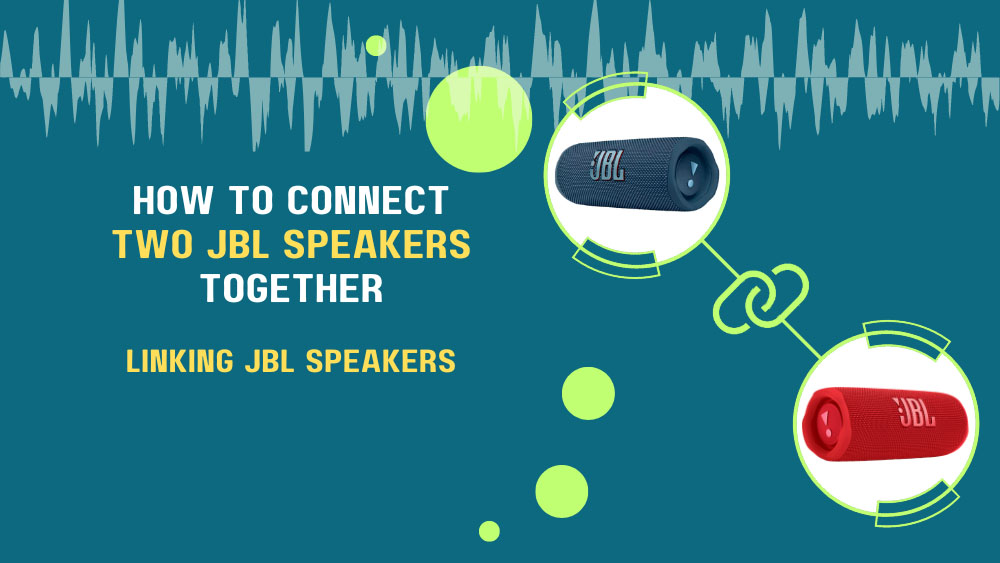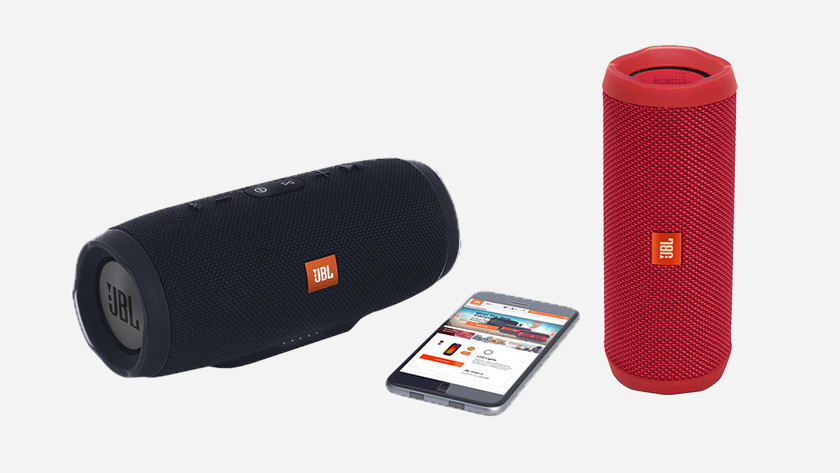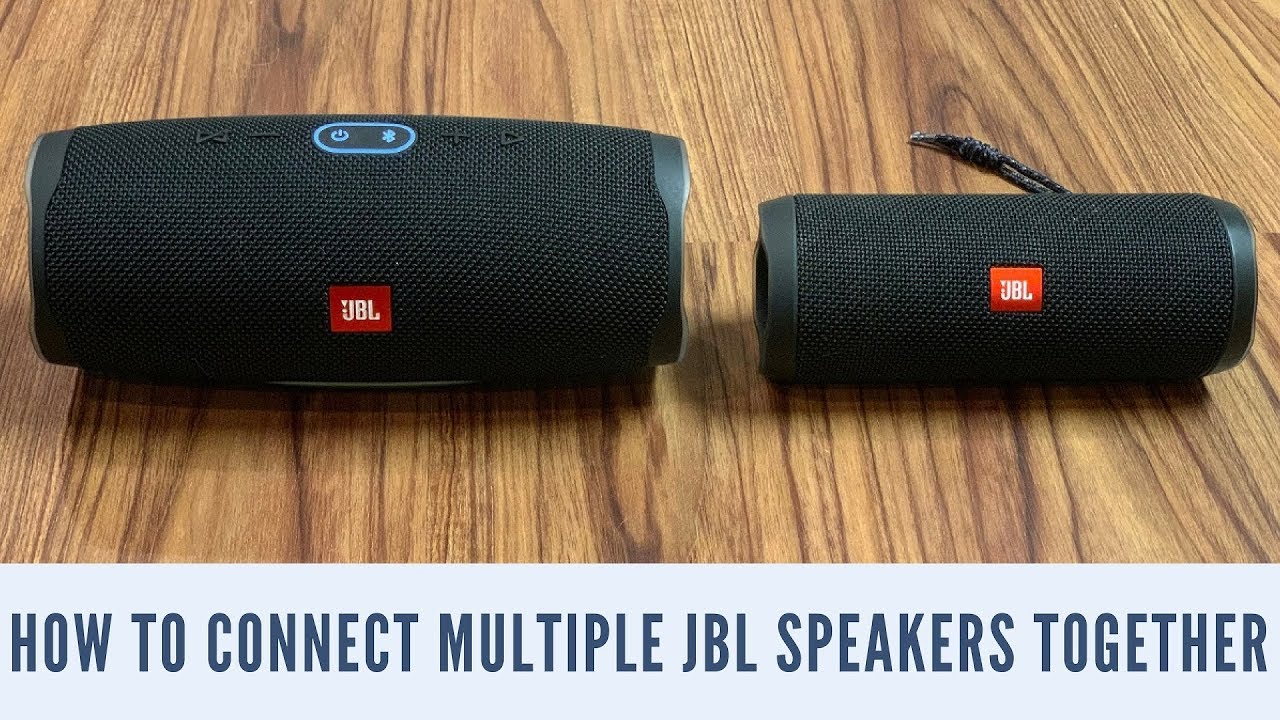To connect multiple JBL speakers, use the JBL Connect+ feature for easy linking and syncing. Follow the steps to pair them and enjoy synchronized audio playback throughout your space.
Listening to music is a delightful experience, but what’s better than that? Listening to music on multiple JBL speakers simultaneously! With JBL’s innovative technology, you can easily connect multiple speakers to create a surround sound effect that fills your room with high-quality audio.
Follow this simple guide and discover how to link your JBL speakers for an immersive sound experience like never before. Whether you’re hosting a party or just want to enhance your listening pleasures, connecting multiple JBL speakers is the way to go. Read on to learn the hassle-free method to sync your speakers and elevate your audio experience.

Credit: www.audiogrounds.com
Intro To Jbl Speakers
What Are Jbl Speakers?
JBL speakers are high-quality audio devices designed to deliver exceptional sound performance for a variety of settings. These speakers are renowned for their reliability, durability, and powerful bass output, making them a popular choice among audiophiles, professionals, and casual users alike.
Advantages Of Jbl Speakers
- Impeccable sound quality
- Robust build and durability
- Wide range of connectivity options
- Portability and versatile usage
- Integration with multiple speakers for enhanced audio experience
Understanding Speaker Connection
Wired Vs. Wireless
Wired connections involve physically linking speakers via cables while wireless connections enable seamless integration without cables.
Wired setups offer robust connectivity whereas wireless systems provide flexibility and convenience.
Both connectivity types have their advantages, depending on user preference and specific needs.
Benefits Of Connecting Multiple Speakers
Enhanced sound coverage and quality with multiple speakers paired together.
Expanded range and volume output to fill larger spaces with immersive audio.
Customizable sound distribution for optimal listening experience throughout the area.
Connecting Jbl Speakers Wirelessly
When setting up your JBL speakers wirelessly, it’s crucial to ensure a stable connection for an immersive audio experience.
Bluetooth Pairing
Pairing JBL speakers via Bluetooth is a seamless process that allows you to connect multiple speakers effortlessly.
- Ensure both speakers are in pairing mode.
- Access the Bluetooth settings on your device.
- Select the first JBL speaker from the available devices list.
- Follow the on-screen prompts to complete the pairing process.
- Repeat the process for additional JBL speakers to create a multi-speaker setup.
Using Jbl Connect App
The JBL Connect app provides a convenient way to control and connect your JBL speakers wirelessly with ease.
- Download and install the JBL Connect app on your smartphone or tablet.
- Open the app and ensure Bluetooth is enabled on your device.
- Scan for available JBL speakers and select the ones you want to connect.
- Customize settings, adjust volume, and sync audio across multiple speakers seamlessly.
Connecting Jbl Speakers With Wires
Connecting JBL speakers with wires allows you to amplify your sound experience by linking multiple speakers together. This method provides a simple and reliable way to create a larger audio system for a more immersive listening experience. There are several ways to achieve this, including using aux cables, daisy-chaining speakers, and more. Let’s explore the different methods below.
Using Aux Cables
When using aux cables, you can connect multiple JBL speakers by utilizing the aux input and output ports on each speaker. Simply plug one end of the aux cable into the output port of the first speaker and the other end into the input port of the second speaker. This creates a direct wired connection between the speakers, allowing them to play audio simultaneously for a synchronized sound experience.
Daisy-chaining Speakers
Another method of connecting JBL speakers with wires is daisy-chaining. This involves linking the speakers in a linear fashion, connecting the output of one speaker to the input of another. By continuing this chain, you can connect multiple speakers together using their wired connections, creating a unified audio output across all speakers in the chain.
Best Practices When Connecting Jbl Speakers
When it comes to creating an immersive audio experience, connecting multiple JBL speakers can elevate your listening experience to a whole new level. However, to ensure seamless synchronization and optimal performance, it’s essential to follow some best practices. In this article, we will explore three key aspects to consider when connecting JBL speakers: Ensuring compatibility, positioning, and setup. Let’s dive in!
Ensuring Compatibility
Before you start connecting your JBL speakers, it is crucial to ensure their compatibility. JBL offers a range of wireless speakers that utilize various connectivity technologies, including Bluetooth, Wi-Fi, and JBL Connect+. To make sure all your speakers can work together seamlessly, check that they support the same connectivity technology or if they have compatibility features like JBL Connect+ that allow them to sync effortlessly.
Positioning And Setup
Proper positioning and setup play a vital role in achieving optimum sound quality and coverage. Here are some key points to keep in mind:
- Room Layout: Analyze your room’s layout and consider the ideal placement for each speaker. Ensure that the speakers are strategically positioned to provide uniform coverage throughout the listening area.
- Speaker Placement: When setting up multiple JBL speakers, maintain a balanced distribution to create a surround sound experience. Place speakers at equal distances apart to achieve optimal audio dispersion.
- Wireless Interference: To prevent signal interference, keep other wireless devices away from the speaker setup. Proximity to electronic devices like routers, microwave ovens, or cordless phones can affect the performance of your JBL speakers.
- Signal Strength: To maintain a stable connection, make sure the speakers are within the recommended range of the connectivity technology being used, such as Bluetooth or Wi-Fi. Obstructions like walls or large objects can affect signal strength, so consider minimizing any obstacles between the speakers.
- Speaker Settings: Check if your JBL speakers provide any specific settings or modes for multi-speaker setups. Some speakers offer dedicated modes like “Party Mode” or “Stereo Mode,” which enhance the synchronous playback or provide a wider soundstage, respectively.
By keeping these positioning and setup best practices in mind, you can ensure that your JBL speakers deliver the best possible audio experience.

Credit: m.youtube.com
Troubleshooting Common Connection Issues
Learn to overcome connection issues when linking multiple JBL speakers for seamless audio synchronization. Follow step-by-step instructions to ensure a hassle-free setup process. Master the art of troubleshooting common connectivity problems to enjoy a flawless speaker network experience.
Poor Sound Quality
When connecting multiple JBL speakers, you may encounter issues with poor sound quality. This can be frustrating, but there are a few troubleshooting steps you can take to resolve this problem.
First, ensure that all speakers are connected properly and positioned in the right locations. Placing speakers too close together can cause interference and affect sound quality. It’s recommended to space them out evenly around the room for optimal audio performance.
If the sound still isn’t satisfactory, check the volume levels on each speaker. Make sure they are balanced, as uneven volume levels can result in distorted audio. Adjust the volume accordingly, using the controls on each speaker or the connected device.
Additionally, electrical interference from nearby devices can impact sound quality. Keep your speakers away from other electronics, such as Wi-Fi routers or microwave ovens, as they can cause signal interference. This interference can result in crackling sounds or a reduction in overall audio quality.
In some cases, the source of the audio itself may be the problem. Ensure that you are playing high-quality audio files or streams. Low-quality files or streaming services may not deliver the best sound experience, regardless of the speakers you are using.
Connection Drops
Another common issue when connecting multiple JBL speakers is experiencing connection drops. This can disrupt your listening experience and make it difficult to enjoy synchronized audio across the speakers.
One of the first steps to address this issue is to check the Bluetooth or Wi-Fi connection between your device and the speakers. Make sure that your device is within range and that there are no obstacles blocking the signal. Walls, furniture, and other objects can weaken the connection and cause drops.
If the connection issue persists, try turning off any additional wireless devices that may interfere with the signal. This includes other Bluetooth devices or nearby Wi-Fi networks. By minimizing potential interference, you can enhance the stability of the connection.
Updating the firmware on your JBL speakers can also help resolve connection drops. Manufacturers often release firmware updates to fix known issues and improve overall performance. Check the JBL website or app for any available updates, and follow the instructions to update your speakers.
If none of these steps solve the problem, it’s possible that there may be a hardware issue with one or more of your speakers. Reach out to JBL customer support for further assistance.
Expanding Audio Setup With Jbl Speakers
Are you looking to elevate your audio experience by connecting multiple JBL speakers for a seamless and immersive sound across different rooms or areas? JBL offers a range of wireless speakers that can be linked together to create a multi-room audio system, allowing you to enjoy your favorite music throughout your home. In this guide, we will walk you through the process of creating a multi-room audio system using different JBL speaker models, enabling you to fill your living space with high-quality sound.
Creating A Multi-room Audio System
With JBL’s innovative Connect technology, you can effortlessly expand your audio setup by connecting multiple JBL speakers wirelessly. Whether you want to listen to the same music throughout your home or have individual speakers playing different tracks in each room, creating a multi-room audio system with JBL speakers allows you to customize your audio experience to suit your preferences. By following a few simple steps, you can synchronize your JBL speakers and enjoy a seamless audio experience in multiple areas of your home.
Using Different Jbl Speaker Models
JBL offers a diverse range of speaker models, each with its unique features and capabilities. Whether you opt for portable Bluetooth speakers, compact bookshelf speakers, or powerful floor-standing speakers, you can mix and match different JBL speaker models to create a personalized multi-room audio setup that suits your specific needs and preferences. With JBL’s compatibility across various models, you can effortlessly integrate different speakers into your system, ensuring a cohesive and synchronized audio experience throughout your home.

Credit: www.coolblue.nl
Tips For Optimal Performance
Learn how to seamlessly connect multiple JBL speakers to maximize your sound experience. Follow these expert tips for optimal performance and enjoy a synchronized, powerful audio output throughout your space. Maximize your listening experience with a simple, hassle-free setup for your JBL speakers.
Optimizing speaker placement is crucial for achieving the best sound. Placing the speakers symmetrically creates a balanced listening experience. Make sure the speakers are at ear level for optimal sound projection. Avoid placing speakers too close to walls to prevent sound distortion.Adjusting Settings For Room Acoustics
Utilize your speaker’s built-in equalizer to enhance sound quality. Experiment with different sound settings to find the ideal balance. Consider using acoustic panels to minimize room reverberation. Adjust bass and treble levels to suit the acoustics of your room.Frequently Asked Questions Of How To Connect Multiple Jbl Speakers
How Do I Connect Multiple Jbl Speakers Wirelessly?
To connect multiple JBL speakers wirelessly, you can use JBL Connect+ or PartyBoost feature. Simply turn on Bluetooth, pair one speaker with your device, and press the Connect+ or PartyBoost button on both speakers to connect them. Enjoy synchronized music in multiple rooms!
Can I Connect Jbl Speakers Without Bluetooth?
Yes, you can connect JBL speakers without Bluetooth using an auxiliary cable. Simply connect one end of the cable to the headphone jack of your device and the other end to the AUX input on the speaker. You can now play audio from your device through the JBL speaker.
How Many Jbl Speakers Can I Connect Together?
You can connect up to 100 JBL speakers together using JBL Connect+ or PartyBoost feature. Create an immersive audio experience by placing the speakers in different rooms or spreading them out in a large area. Enjoy powerful sound and seamless connectivity with multiple JBL speakers.
Conclusion
Connecting multiple JBL speakers is a fantastic way to enhance your audio experience. With the right steps and equipment, you can seamlessly link your speakers for a high-quality sound system. Whether it’s for a party or personal enjoyment, the ability to connect multiple JBL speakers opens up a world of audio possibilities.


0 comments